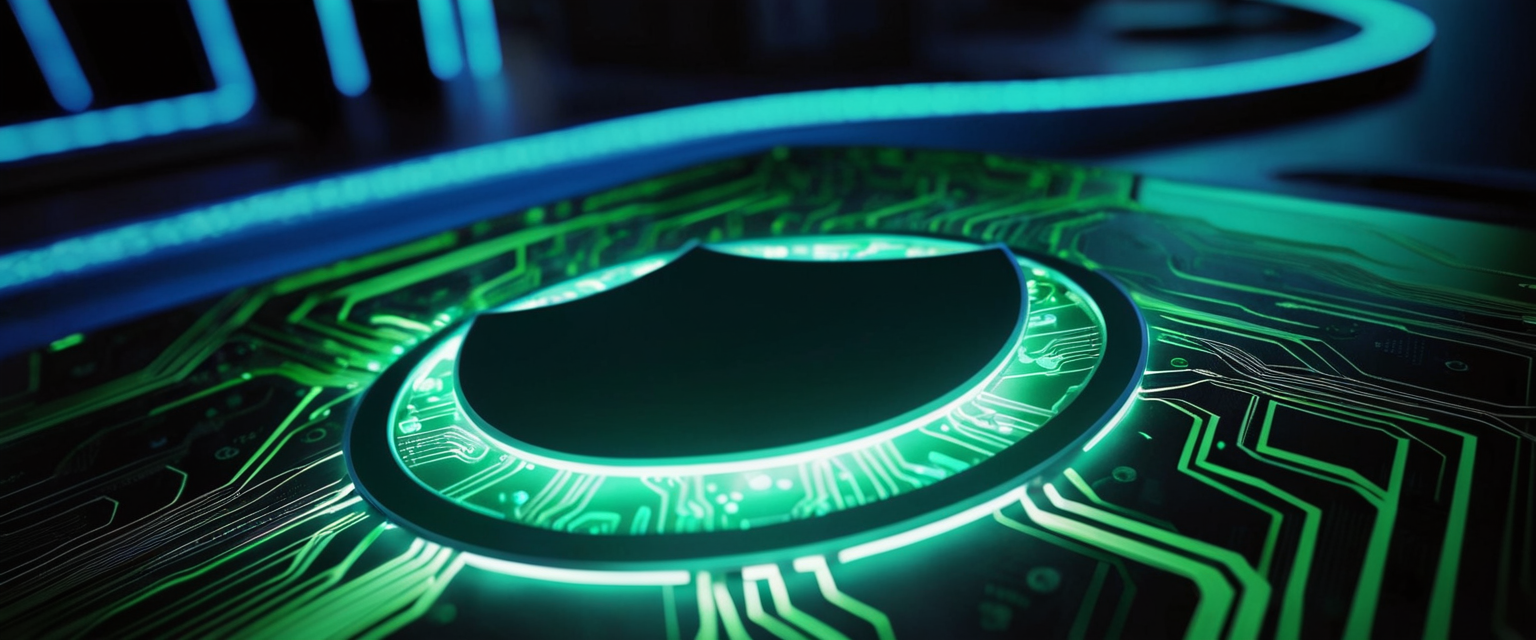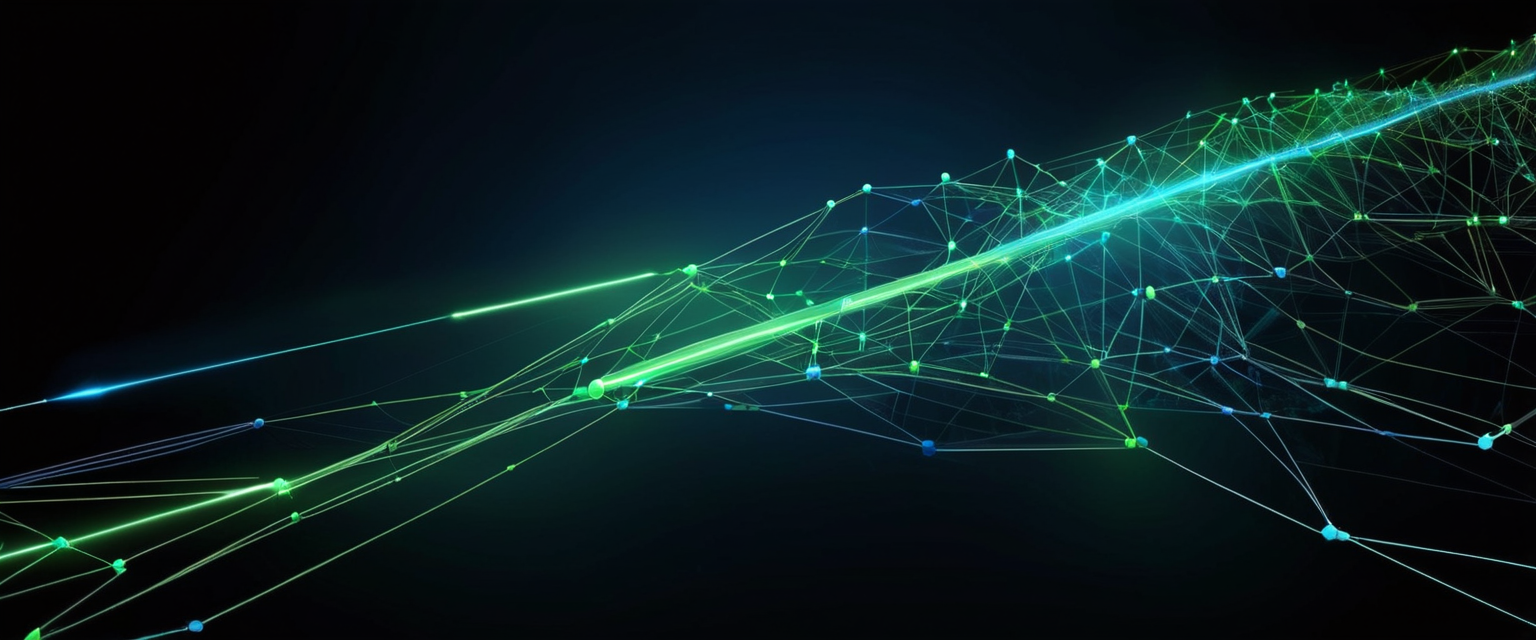
The digital threat landscape has evolved dramatically, with cybercriminals deploying increasingly sophisticated malware and ransomware campaigns that target both individuals and organizations with relentless precision. In 2025, comprehensive virus protection requires more than simply installing antivirus software and hoping for the best; instead, it demands a structured, deliberate approach to system maintenance, security assessment, and threat mitigation. This report presents a detailed analysis of how to conduct a complete annual security tune-up specifically designed to strengthen virus protection defenses, enhance anti-malware efficacy, and build resilience against ransomware attacks within a two-hour timeframe. By implementing this comprehensive plan systematically, users and organizations can significantly reduce their vulnerability to evolving cyber threats while maintaining operational efficiency and device performance. The fundamental premise underlying this approach is that security maintenance, much like physical health maintenance, requires regular scheduled interventions combined with ongoing awareness and practical implementation of established best practices.
The Critical Importance of Annual Security Maintenance
Understanding Why Regular Security Tune-Ups Matter
The foundation of any effective cybersecurity strategy rests upon the recognition that passive security configurations gradually degrade over time. Technology, threats, and organizational environments are in constant flux, meaning that defensive measures that were adequate six months ago may no longer provide sufficient protection against contemporary attack vectors. The cybersecurity challenge itself has expanded dramatically in scope and complexity, as noted in authoritative security literature that emphasizes the reality that most systems of any size or significance have already been penetrated or face ongoing threats from criminals, hackers, terrorists, and other malicious actors. Unlike static security implementations that focus primarily on protecting system boundaries, modern cyber defense requires dynamic and sophisticated approaches that evolve alongside the threat landscape.
Annual security tune-ups serve multiple critical functions in maintaining protective efficacy. First, they provide an opportunity for comprehensive assessment of existing security postures, identifying vulnerabilities and misconfigurations that may have accumulated through daily system operations or been inadvertently introduced through software updates. Second, they allow for systematic updating and patching of security tools themselves, ensuring that antivirus definitions, malware signatures, and threat intelligence are current and capable of detecting the latest variants of malicious software. Third, they create scheduled opportunities to test backup and recovery systems, verify that security controls are functioning as designed, and validate that incident response procedures remain viable and effective. Fourth, they reinforce security awareness among users and administrators by reiterating the importance of proper security practices and identifying areas where additional training or procedural refinement might be beneficial.
The business case for annual security tune-ups becomes even more compelling when considering the potential consequences of inadequate virus protection. Organizations that fail to maintain current security practices face exponentially higher risks of data breaches, ransomware infections, and operational disruptions that can cost orders of magnitude more than the time and resources invested in preventive maintenance. Individual users similarly benefit from regularly scheduled security maintenance that prevents personal data theft, financial fraud, and identity compromise. The two-hour annual commitment for comprehensive security maintenance represents an extraordinarily cost-effective investment in long-term digital security and operational resilience.
Establishing the Two-Hour Framework
The two-hour security tune-up framework is specifically designed to maximize the return on time investment by focusing exclusively on high-impact activities that directly enhance virus protection capabilities and reduce malware infection risk. This timeframe is achievable for most users and organizations while still providing sufficient duration to complete all essential maintenance tasks. The framework operates on the principle that security maintenance should be efficient yet thorough, strategic in its focus areas, and capable of producing measurable improvements in security posture.
The structure of a two-hour annual tune-up divides into distinct phases, each with specific objectives and deliverables. The first phase, typically consuming twenty to thirty minutes, focuses on assessment and preparation activities including system inventory review and threat identification. The second phase, lasting approximately forty to fifty minutes, encompasses the core maintenance activities including antivirus operations, security software updates, and system optimization. The third phase, spanning the final thirty to forty minutes, involves verification testing, documentation of changes, and implementation of strategic improvements to ongoing security practices. This phased approach ensures that critical tasks are completed first, allowing for graceful degradation if time constraints become an issue, while simultaneously ensuring that the most impactful security improvements receive priority attention.
Understanding the Evolving Malware and Ransomware Threat Landscape
Malware Types and Infection Vectors
Malware represents a broad category of malicious software designed to invade privacy, steal information, damage operating systems, or allow hackers to take control of compromised systems. In contemporary security assessments, anti-malware programs must contend with numerous malware variants including viruses, Trojans, rootkits, ransomware, spyware, keyloggers, and adware programs, each presenting distinct infection mechanisms and operational characteristics. The comprehensive nature of modern malware threats necessitates equally comprehensive protection mechanisms that extend beyond simple signature-based detection to include behavioral analysis and heuristic identification techniques.
Malware transmission occurs through multiple vectors, with email remaining the single most common delivery mechanism despite years of security awareness campaigns. Email attachments, particularly those masquerading as legitimate business documents or urgent system notifications, continue to serve as effective infection vectors because they exploit human psychology and social engineering rather than technical vulnerabilities alone. Beyond email, malware spreads through compromised websites, malicious advertisements, software exploitation, USB devices, and file-sharing platforms. Some infections occur through drive-by downloads where merely visiting a compromised website results in automatic malware installation without user knowledge or consent. Others leverage software vulnerabilities, particularly in browsers and plugins, to gain system access.
Non-compliant systems and legacy systems represent particularly high-risk targets for malware infection. A non-compliant system is one that has not been updated with operating system or application patches, lacks current antivirus or firewall software, or has become inconsistent with established security standards. Legacy systems that the vendor no longer provides support or fixes for remain vulnerable to well-known exploits that sophisticated attackers continue to leverage years after the original vulnerability disclosure. This reality underscores why annual security tune-ups must include comprehensive patching efforts and evaluation of system support status.
Ransomware as a Distinct Threat Category
Ransomware has emerged as a particularly devastating threat to both individual users and large organizations, representing a category of malicious software specifically designed to encrypt a user’s files and demand payment for decryption keys. The ransomware threat landscape has fundamentally transformed through the emergence of ransomware-as-a-service (RaaS) business models, where ransomware development kits are now available for purchase on the dark web, making it easier for even technically unsophisticated criminals to launch devastating attacks. Recent reports estimate that global cybercrime costs, including ransomware-related losses, could exceed 10 trillion dollars annually by 2025, representing an extraordinary financial burden on global commerce and individual security.
The NOREA Ransomware Framework provides a comprehensive understanding of ransomware attack methodology, identifying three primary kill chain phases through which attacks propagate. The “In” phase encompasses attackers gaining initial access into organizational networks and systems to install malware; the “Through” phase involves escalating initially gained access rights to administrator access levels and achieving broad lateral movement across networked systems; and the “Out” phase represents the final stage where attackers maximize data extraction and encryption impact. This conceptual framework is critically important for understanding where defensive controls must be implemented to effectively interrupt the attack sequence at multiple points, potentially preventing successful infection or at least limiting damage.
Ransomware protection requires multiple mitigation strategies addressing each kill chain phase. Preventive controls focused on the “In” phase work to block initial attack entry vectors and prevent malware installation. Containment controls operating during the “Through” phase restrict the ability of compromised accounts to escalate privileges and laterally move across networks. Recovery capabilities address the “Out” phase by enabling rapid restoration of systems from clean backups, limiting the attacker’s ability to encrypt files and demand ransom payments. Effective ransomware defense therefore requires defense-in-depth strategies that implement controls at each phase rather than relying exclusively on any single protective measure.
Pre-Tune-Up Assessment: Evaluating Current Protection Status
Conducting System Inventory and Security Baseline Assessment
The foundation for any effective security tune-up begins with accurate understanding of what systems, devices, and software require protection, followed by assessment of current protection status relative to organizational security standards and baseline configurations. The assessment phase typically consumes fifteen to twenty minutes of the overall two-hour tune-up window but provides essential information that guides all subsequent maintenance activities. This phase involves taking inventory of all computing devices including laptops, desktop computers, tablets, and smartphones that are expected to receive security maintenance, along with specialized devices such as network appliances, security cameras, and Internet of Things (IoT) devices that may require security attention.
For each device or system on the inventory, the assessment should document current operating system versions, installed antivirus or anti-malware software with version numbers and license expiration dates, firewall configuration status, backup system status, and any known security vulnerabilities or outstanding patches. This information provides the objective baseline against which tune-up improvements will be measured and documented. Assessment should also encompass network topology and connectivity, including documentation of Wi-Fi networks in use, connected IoT devices, and any external connections or remote access mechanisms that might provide attack vectors.
A critical component of the pre-tune-up assessment involves reviewing security logs and system diagnostics to identify any suspicious activity, failed login attempts, malware detection events, or other indicators that the current security posture may have been compromised. This information should be documented not only for the tune-up record but also to inform prioritization decisions about which systems require most urgent attention or enhanced security measures. If security logs reveal evidence of previous compromise or active threats, immediate response actions may be required before routine maintenance can proceed.

Identifying Priority Areas and Resource Allocation
Once the baseline assessment is complete, security professionals must prioritize maintenance activities based on risk assessment and resource constraints. Not all systems present equal risk, nor do all security deficiencies require equal remediation effort. Effective prioritization typically follows a four-level hierarchy: emergency tasks requiring immediate attention due to health, safety, or operational security concerns; high-priority tasks that will directly affect operations in the near future if not completed; medium-priority tasks typically addressing preventive maintenance activities that will gradually affect operations if neglected; and low-priority tasks representing desirable but not essential improvements. Within the two-hour tune-up window, focus must remain on high-priority and critical medium-priority activities.
Risk-based prioritization also considers the value that different systems represent to the organization or individual. Systems containing sensitive personal information, financial records, or critical operational data warrant higher priority for security maintenance than systems used purely for entertainment or non-sensitive information access. Similarly, systems that are frequently exposed to external networks or untrusted connections present higher risk profiles than systems maintained in secure, controlled environments. Devices owned by vulnerable individuals such as children or elderly persons may warrant enhanced security measures and more frequent tune-up attention.
The pre-tune-up assessment should explicitly identify any gaps between current security posture and organizational security requirements, whether established internally, mandated by regulatory compliance obligations, or recommended by authoritative standards such as NIST frameworks. These gaps then become the focus of prioritized improvement activities during the maintenance phases of the tune-up.
Core Tune-Up Components: System Maintenance and Software Optimization
Part One: Security Software Updates and Antivirus Definition Refresh
The first core component of the two-hour annual tune-up focuses on ensuring that all antivirus, anti-malware, and security software is updated to current versions with the latest threat definitions and protective capabilities. This activity represents one of the highest-impact security interventions available, as security software becomes progressively less effective as threat intelligence stagnates and malware variants proliferate beyond the scope of existing definitions.
The update process should systematically address each security tool identified during the pre-tune-up assessment phase, beginning with operating system updates and patches, proceeding through updates for the primary antivirus or anti-malware suite, and continuing with updates for supplementary security tools including firewalls, intrusion detection systems, browser security extensions, and other protective utilities. Many modern systems support automatic updates, but the annual tune-up provides an opportunity to verify that automatic update mechanisms are functioning properly and, if desired, to manually initiate updates to ensure current protection before conducting other maintenance activities.
Operating system updates should be installed first, as these often include critical security patches that enhance the foundation upon which all other security tools operate. Windows users specifically should check Windows Update to ensure all available patches and security updates have been installed. Mac users should verify macOS system updates are current. Linux users should employ their distribution’s package management system to ensure security patches are installed. Only after operating system patches are confirmed current should users proceed to update antivirus and anti-malware software.
Protect Your Digital Life with Activate Security
Get 14 powerful security tools in one comprehensive suite. VPN, antivirus, password manager, dark web monitoring, and more.
Get Protected NowAntivirus software updates accomplish two distinct functions: updating the application software itself with new features, bug fixes, and enhanced detection algorithms, and updating the threat definition databases that enable the software to recognize and block malicious code. Some commercial antivirus solutions like Norton 360 maintain industry-leading detection rates through continuous threat intelligence collection and regular definition updates, with testing demonstrating consistent protection against malware variants, ransomware, and emerging threats. During the annual tune-up, verifying that these definition updates are current is essential, as security software using outdated definitions may fail to detect contemporary malware variants.
Part Two: Comprehensive System Scanning and Malware Detection
After security software is updated to current versions with fresh threat definitions, the next core tune-up activity involves conducting comprehensive system scans to detect and remediate any malware infections or suspicious software that may have accumulated on the system. The comprehensive scan typically requires more processing time than quick scans, but the annual tune-up framework recognizes that thorough detection justifies the additional scanning duration, particularly because infections that remain undetected gradually compound in severity and impact.
Full system scans should examine all files, system memory, startup locations, and suspicious file system structures where malware commonly hides. Many modern antivirus solutions like Microsoft Defender Antivirus can be configured to run comprehensive scans on a scheduled basis, with the annual tune-up providing an opportunity to verify or configure these schedules. Performing the comprehensive scan during the tune-up session allows immediate remediation of any detected threats rather than discovering infection at an indeterminate future date.
The scanning process itself should be allowed to complete without interruption or premature termination, as suspending scans before completion leaves portions of the system unexamined. This typically requires either scheduling the scan to occur during a time window when the system will remain available for the full duration, or accepting reduced system performance during active scanning. However, the annual nature of comprehensive scanning means that the performance impact occurs only once per year, making it entirely acceptable to endure temporary performance degradation in service of thorough threat detection.
If the comprehensive scan detects malware or suspicious software, the antivirus or anti-malware application should be directed to quarantine or remove the detected items rather than simply noting their presence. Quarantine isolates suspected malicious code in a protected area where it cannot execute or spread to other systems while remaining available for manual examination if desired. Once malicious software is quarantined or removed, the scanning process should continue to completion to identify any additional threats. In some cases, particularly severe infections may require additional remediation steps, specialized malware removal tools, or even complete system restoration from clean backups if thorough removal cannot be verified.
Part Three: Backup Systems Verification and Recovery Testing
A fundamental principle of comprehensive security maintenance recognizes that even the best preventive measures occasionally fail, meaning that organizations and individuals must maintain the ability to recover from successful attacks or catastrophic failures. The annual security tune-up therefore includes verification that backup systems are functioning properly and that data recovery processes remain viable. Backups specifically protect against ransomware attacks, as recovering from clean pre-infection backups represents the most reliable method for restoring systems after successful ransomware encryption.
The 3-2-1 backup strategy, widely recognized as industry best practice, maintains three copies of critical data on two different media types with one copy stored off-site. During the annual tune-up, verify that this backup strategy is implemented correctly: that your primary data exists on your working device, that a backup copy exists on an external storage device maintained locally, and that a third copy exists in cloud storage or at a physically distant location. Many modern systems like Windows Backup provide integrated backup capabilities that simplify this process, maintaining copies on OneDrive or other cloud storage services in addition to local backups.
Equally important as confirming that backups are being created is actually testing that backup restoration processes work correctly. Many organizations and individuals discover during crisis situations that their backup systems have silently failed for months or years, with backups created but containing corrupted or incomplete data incapable of supporting system restoration. The annual tune-up should include at least a test restoration of a small subset of backed-up data to confirm that the backup system maintains data integrity and that restoration procedures function as designed. Some organizations rotate this testing among different backup locations and systems each year to ensure all backup methods are verified.
Part Four: Disk Cleanup and System Optimization
The final core tune-up component addresses system optimization and disk space management, activities that enhance both security and operational performance. Over time, temporary files, cache data, unused applications, and other non-essential files accumulate on systems, consuming valuable storage space and potentially harboring locations where malware can hide. Disk cleanup tools remove these unnecessary files, freeing storage space and improving system responsiveness.
The disk cleanup process should target several categories of files: temporary files created by operating systems and applications, cached files stored by web browsers, application cache files, and old log files from system operations. Modern systems like Windows include built-in disk cleanup functionality accessible through the Storage settings or through the standalone Disk Cleanup utility. Running these cleanup utilities during the annual tune-up can free considerable storage space, particularly on systems that have been in use for several years.
Beyond file deletion, system optimization during the tune-up includes organizing remaining files and folders to improve retrieval efficiency, updating operating system index services to reflect the current file system structure, and verifying that system partitions contain adequate free space for normal operations. Many security experts recommend maintaining at least fifteen to twenty percent of total disk capacity as free space to allow for system operations, temporary file creation, and recovery activities.
The cleanup process should not include randomly deleting files simply because they are unfamiliar or unrecognized. Many critical system files are essential for proper operating system and application functionality, and their deletion can render systems unstable or entirely non-functional. System cleanup utilities are specifically designed to target only files that are safe to remove and provide detailed descriptions of what will be deleted before proceeding, allowing informed decisions about cleanup actions.
Advanced Protection Strategies: Anti-Malware and Ransomware Defenses
Evaluating and Optimizing Antivirus Software Selections
The effectiveness of overall malware and ransomware protection depends critically on the quality and capabilities of the primary antivirus or anti-malware software deployed on systems. The annual tune-up provides an opportunity to evaluate whether current antivirus choices continue to meet organizational needs and threat protection requirements, and to optimize their configuration for maximum effectiveness.
Contemporary antivirus and anti-malware software must provide real-time protection that continuously monitors system activity for malware signatures and suspicious behavioral patterns, automatic updates that maintain current threat definitions without requiring manual intervention, and scheduled scanning capabilities that periodically examine the complete system for infections. Leading solutions like Norton 360, which consistently ranks among the top antivirus options and maintains a 100% virus protection promise backed by independent testing validation, provide comprehensive protection including real-time threat detection, protection against advanced malware including spyware and Trojans, ransomware-specific defenses, VPN capabilities for secure browsing, and password managers for credential protection.
Bitdefender represents an alternative leading solution that delivers multi-level protection against ransomware, including notifications when encryption attempts are detected, automatic file backups preventing data loss from encryption attacks, and immediate malware removal once detected. Kaspersky, Avast, and other reputable vendors similarly provide comprehensive anti-ransomware capabilities alongside traditional antivirus protection. When evaluating antivirus options during the tune-up, consider not only the breadth of protection offered but also system performance impact, ease of use, quality of customer support, and compatibility with your specific operating system and hardware configuration.
Organizations should be particularly cautious about deploying multiple antivirus or anti-malware solutions simultaneously, as this practice often results in conflicts between protective systems that actually reduce overall security effectiveness rather than enhancing it. Instead, select a single comprehensive solution and configure it optimally, supplemented if desired with specialized ransomware protection tools that focus exclusively on encryption attack defense.

Firewall Configuration and Network Boundary Protection
Firewalls represent critical components of defense-in-depth security strategies, functioning as barriers that monitor and control incoming and outgoing network traffic based on predetermined rules and policies. Most modern systems include both software firewalls built into the operating system and may benefit from additional hardware firewalls on network gateways. The annual tune-up should verify that firewalls are properly configured and operational, with particular attention to ensuring that essential network connectivity remains enabled while blocking unauthorized access attempts.
Firewall configuration should follow the “default deny” principle, in which all traffic is blocked by default and only explicitly required traffic is permitted to pass. This approach minimizes attack surface by ensuring that no unintended ports or services are accessible from external networks. Organizations should establish firewall policies that specifically define what types of traffic are allowed (allowlisting), what specific sources and destinations are permitted, and what actions the firewall should take when traffic violates these rules. During annual maintenance, reviewing and updating firewall rules ensures that policies remain aligned with current organizational needs and threat environments.
For home networks, similar principles apply scaled to residential environments. Home office security checklists specifically recommend enabling router firewalls, changing default router administrator credentials, creating separate Wi-Fi networks for work devices and personal/IoT devices, and disabling unnecessary features like WPS (Wi-Fi Protected Setup) that represent known security weaknesses. The annual tune-up provides an opportunity to verify that these security controls remain properly configured on home routers and other network devices.
Password Management and Multi-Factor Authentication Verification
Strong credential security represents a foundational element of virus and malware protection, as attackers frequently leverage stolen or weak passwords to gain access to user accounts, from which they can deploy malware, establish persistent system access, and conduct reconnaissance for more extensive attacks. The annual security tune-up should include verification that critical account passwords remain strong, unique, and properly managed.
Password best practices universally emphasize the importance of using strong, complex passwords comprising combinations of uppercase letters, lowercase letters, numbers, and special characters, with lengths of at least twelve to sixteen characters. Equally critical is the principle that each account should employ a unique password, as password reuse across multiple accounts means that compromise of a single account password exposes all accounts using that same credential. Password managers specifically address this challenge by generating, securely storing, and automatically inputting strong unique passwords for each account, eliminating the cognitive burden of remembering numerous complex passwords while substantially improving credential security.
Leading password managers like NordPass employ enterprise-grade encryption practices, never suffer data breaches, and provide multi-factor authentication through security keys and biometric methods for enhanced account protection. During the annual tune-up, verify that password managers are installed on all devices requiring account access, that accounts with sensitive access privileges are protected with strong unique passwords, and that multi-factor authentication is enabled on email and financial accounts representing particularly high-value targets for attackers.
Multi-factor authentication (MFA) adds an additional layer of security beyond passwords alone, requiring verification through a secondary method such as a one-time code sent via text message, an authentication app generating time-based codes, security keys, or biometric verification through facial recognition or fingerprint scanning. Even if attackers successfully compromise user passwords through phishing, credential theft, or dictionary attacks, MFA prevents unauthorized account access without possession of the secondary authentication factor. The annual tune-up should specifically verify that MFA is enabled on all email accounts (which represent keys to account recovery for other systems), financial accounts, work accounts with access to sensitive information, and any other high-value targets.
Post-Tune-Up Verification and Comprehensive Testing
Conducting Post-Maintenance System Testing
Upon completion of the core tune-up activities, systematic verification that all security improvements function correctly represents a critical final step ensuring that maintenance efforts actually enhanced protection as intended. This verification phase typically consumes twenty to thirty minutes of the overall two-hour tune-up window but provides essential validation that security controls operate correctly and have successfully eliminated detected threats.
System verification should begin by confirming that all security software is reporting normal operation status, with no errors, warnings, or missed updates. Antivirus and anti-malware applications typically display status indicators showing whether real-time protection is active, threat definitions are current, and no malicious activity has been detected since the last update. Similarly, firewall status should be verified to confirm that traffic filtering is active and no alerts indicate suspicious network activity. Backup system status should be checked to verify that the most recent backup completed successfully and contains current data.
For systems experiencing malware detection and removal during scanning, verification should include a repeat scan with fresh threat definitions to confirm that all detected malware has been successfully eliminated and no residual infections remain. Some malicious software resists removal or maintains persistent access through hidden components, requiring multiple remediation attempts or specialized removal tools for complete eradication. The verification scan definitively confirms whether remediation was successful.
Testing should also encompass practical verification that security features function as designed. For example, browsers should be tested to verify that security warnings are displayed for known malicious sites, that password managers autofill credentials correctly, and that secure connection indicators display for HTTPS websites. Network connections should be verified to confirm that VPN functionality works properly if configured. Backup systems should undergo test restoration operations on sample data files to confirm that backed-up data can be successfully recovered.
Documentation and Audit Trail Creation
Comprehensive security practice includes detailed documentation of maintenance activities, findings, and improvements, creating an audit trail that supports compliance verification, enables tracking of security posture trends over time, and facilitates incident investigation if future security events occur. The annual tune-up should result in documented records of what was done, what was found, what was corrected, and what remains for future attention.
Documentation should specifically record the date of the tune-up, systems or devices included in maintenance, antivirus software versions and threat definition dates, dates of operating system and application patches applied, results of malware scanning including any threats detected and remediation actions taken, backup system status and test restoration results, firewall configuration verification, and any security vulnerabilities or compliance gaps identified during assessment. This documentation provides objective evidence of maintenance activities if regulatory or compliance audits require demonstration of security practices.
For organizations managing multiple systems or devices, centralized documentation in spreadsheets or dedicated security management tools enables tracking of which systems received tune-up maintenance in which years, highlighting systems approaching their maintenance due dates and enabling trend analysis identifying recurring security issues across multiple devices. Individual users similarly benefit from documentation noting when each personal device last received comprehensive maintenance, enabling scheduling of future tune-ups at appropriate intervals.
Creating Sustainable Security Practices Beyond Annual Tune-Ups
Implementing Daily and Weekly Security Routines
While annual security tune-ups provide essential comprehensive maintenance, sustained protection against malware and ransomware requires ongoing daily and weekly security practices that maintain protective effectiveness between major tune-up events. These routine activities require minimal time investment but substantially reduce the likelihood of successful malware infections or ransomware attacks.
Daily security practices that support ongoing protection include verification that antivirus and anti-malware software is actively running and has not been disabled, review of security software status indicators confirming that real-time protection is operational, and heightened vigilance regarding email attachments and suspicious links that commonly deliver malware. Users should never open email attachments from unfamiliar senders or click links in suspicious emails, as these represent the most common malware delivery mechanisms despite years of security awareness efforts. Similarly, web browsing should favor trusted, well-known websites over suspicious sites offering suspicious services or content, as malicious websites represent common malware infection vectors.
Weekly security practices should include applying any available software updates and security patches released since the previous week, as vendors continuously release patches addressing newly discovered vulnerabilities exploited by malware and ransomware campaigns. Weekly practices might also encompass verification that backup processes completed successfully, review of security logs for suspicious activity, and testing of critical business functions or data access to identify any degradation that might indicate ongoing compromise.
Monthly security routines should include more comprehensive activities such as review of all user access privileges and removal of unnecessary access rights, scanning of critical systems for vulnerabilities, testing of backup restoration procedures to confirm ongoing viability, and review of security policies and procedures to identify any areas requiring update or clarification.
Maintaining Current Threat Intelligence and Security Awareness
Security effectiveness depends not only on technical controls but equally on the knowledge and awareness of users and administrators responsible for system security. The annual tune-up provides an opportunity to refresh security awareness and ensure that all stakeholders understand current threat methods and appropriate defensive practices.
Current threat intelligence indicates that ransomware-as-a-service models have dramatically lowered barriers to entry for cybercriminals, with sophisticated ransomware attack tools now available to technically unsophisticated threat actors. AI-driven attacks increasingly automate phishing campaigns and bypass security systems through machine learning-enhanced evasion techniques. IoT vulnerabilities expand attack surfaces through proliferation of connected devices that frequently lack robust security implementations. These evolving threat methodologies require corresponding evolution in defensive practices and user awareness.
Phishing awareness training specifically enables users to recognize deceptive emails that appear legitimate while actually attempting credential theft or malware delivery. Effective training demonstrates real-world examples of phishing emails, teaches users to verify sender authenticity through secondary methods before clicking links or downloading attachments, and explains the consequences of successful phishing attacks including malware installation and ransomware infection. Organizations and individuals should actively pursue continuous phishing awareness training throughout the year rather than limiting security education to the annual tune-up period.
Security awareness extends beyond malware and ransomware to encompass appropriate device usage, protection of sensitive information, secure password practices, and physical security of computing devices. Users should understand that security represents a shared responsibility where individual actions either enhance or compromise organizational security, and that awareness combined with consistent practice of security fundamentals represents the most effective defense against contemporary cyber threats.
Sustaining Your Annual Security Tune-Up
The two-hour annual security tune-up framework presented throughout this comprehensive analysis represents a carefully designed approach to maintaining robust virus protection, implementing effective anti-malware defenses, and building organizational resilience against ransomware and other sophisticated cyber threats. By systematically addressing assessment and baseline establishment, core maintenance activities including software updates, comprehensive scanning, backup verification, and system optimization, advanced protection strategies encompassing antivirus optimization, firewall configuration, and credential security, and post-maintenance verification and documentation, organizations and individuals can significantly enhance security postures within a manageable time commitment that fits easily into annual schedules.
The evidence overwhelmingly demonstrates that routine security maintenance, when properly structured and consistently executed, dramatically reduces vulnerability to malware infections, ransomware attacks, and other cyber threats that otherwise inexorably degrade system security over time. The two-hour investment in annual security maintenance pales in comparison to potential costs of security breaches, data loss, operational disruptions, and reputational damage resulting from successful cyber attacks.
Beyond the technical framework presented here, sustained security success requires organizational commitment to security as a value, allocation of resources adequate to implement protective measures, ongoing investment in security awareness and training, and recognition that security represents a continuous process rather than a destination achieved through one-time implementation of controls. The annual tune-up provides structure and discipline to this ongoing process, creating predictable intervals for comprehensive assessment and improvement while supporting the daily, weekly, and monthly practices that maintain security effectiveness between major maintenance events.
As the threat landscape continues evolving with artificial intelligence-enhanced attacks, ransomware-as-a-service proliferation, and expanding Internet of Things vulnerabilities, comprehensive security maintenance practices become progressively more critical rather than less so. Organizations and individuals who embrace structured security maintenance frameworks, implement comprehensive anti-malware and anti-ransomware defenses, and maintain ongoing security awareness will substantially reduce their exposure to contemporary cyber threats and position themselves for long-term digital security and operational resilience. The two-hour annual commitment represents an extraordinarily worthwhile investment in this critical objective.






